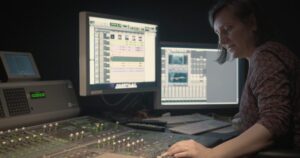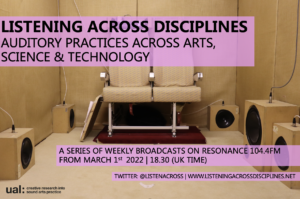Can disciplines that do not work with sound, profit from listening? Is a sonic focus on data a means to introduce listening to all disciplines?
And working through this: How can we represent and communicate data through sound? What are the ways by which a sonic sensibility can enrich data representation and interpretation? What can a sonic rendering of data yield? And how can it bring listening to all disciplines?
These were the questions we are asking ourselves in the last part of this research project where we work with Prof. Tania Burchardt and Dr. Bert Provan from CASE, (The Centre for Analysis of Social Exclusion), a multi-disciplinary research centre based at the London School of Economics and Political Science (LSE), and Dr. Sandra Pauletto, a sonification Designer and Associate Professor in Media Technology in the Interaction Design Department at KTH Royal Institute of Technology, Stockholm, Sweden, to engage in the possibilities of sonification. This collaboration focuses on data used by the social policies and distributional outcomes in a changing Britain (SPDO) research programme at CASE to discuss and experiment with sonification tools and strategies in order to ultimately develop a different representation of the same data in sound. Below you can read about what happened when Dr Pauletto worked through this data, producing sonification examples. This serves to put forward and establish whether listening to non-sonic information (e.g. numerical data, graphs) can generate new insights and new knowledge.
However, the questions that initiated this collaboration had originated much earlier, on a visit the PI undertook to CERN, The European Organization for Nuclear Research, in Geneva, Switzerland in August 2016. This visit took place in the frame of the network project that preceded this project, Listening across Disciplines I, and on the kind invitation by Dr. Steve Goldfarb, a particle physicist from the University of Melbourne working on the ATLAS Experiment at CERN. On the fabulously interesting tour through the laboratories that he generously offered,, what was most memorable were the numerous digital and analogue visualisation devices that constantly translated and communicated what was happening underground in the Large Hadron Collider.
The interview made with Dr. Goldfarb sadly and amateurly got distorted in the Alpine wind, but maybe that did not matter. What did matter and lead on to this future research was the discussion around visualisation and visualisation devices and their primacy in scientific research and communication. How they instil trust and a sense of reliability through a cultural belief in visual veracity and comparability. We “read” the image through an entrained visuo-cultural literacy and believe to know what goes on, even in the most miniscule and thus invisible particles of the world. It led to a discussion on whether these micro particles would not much better be









